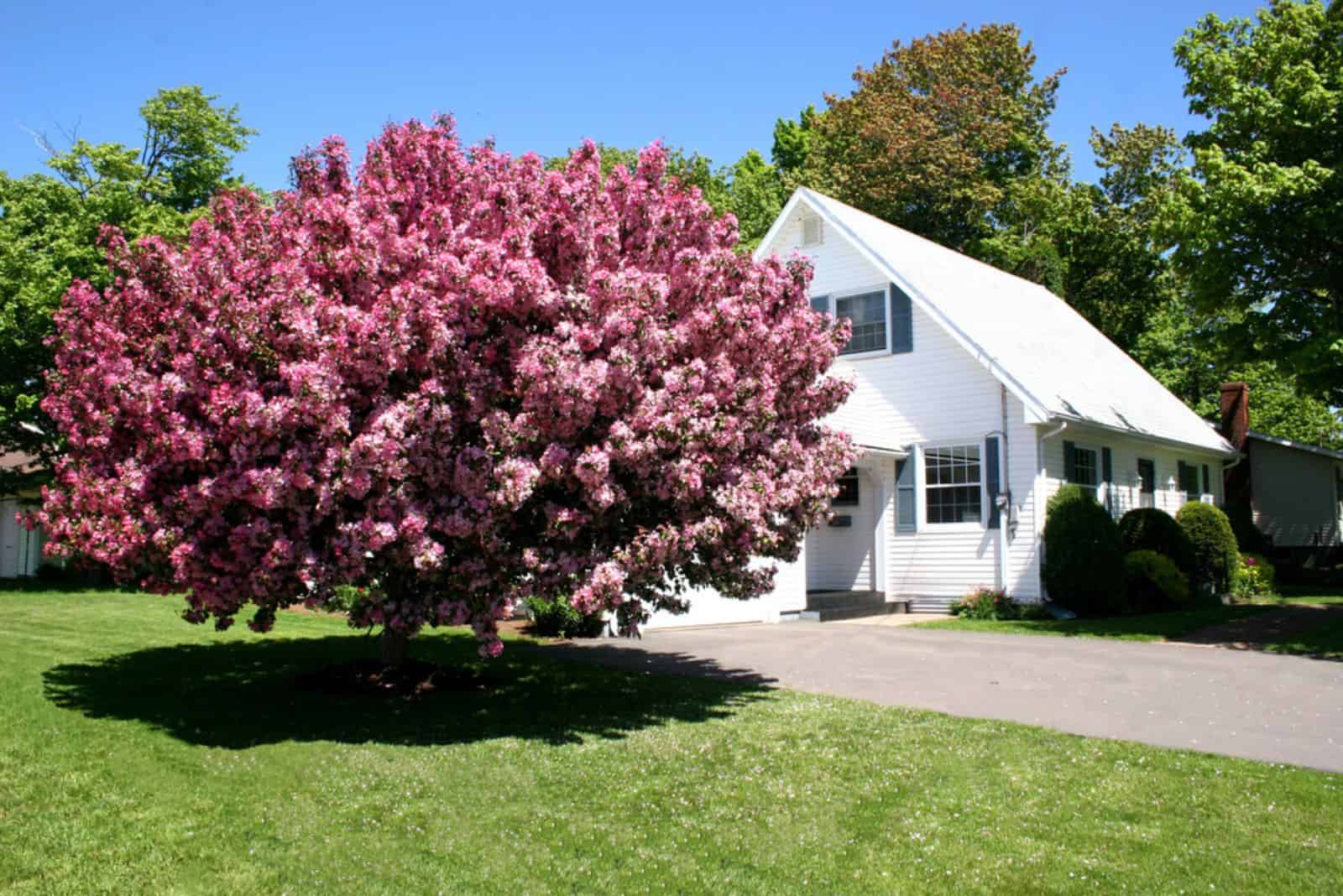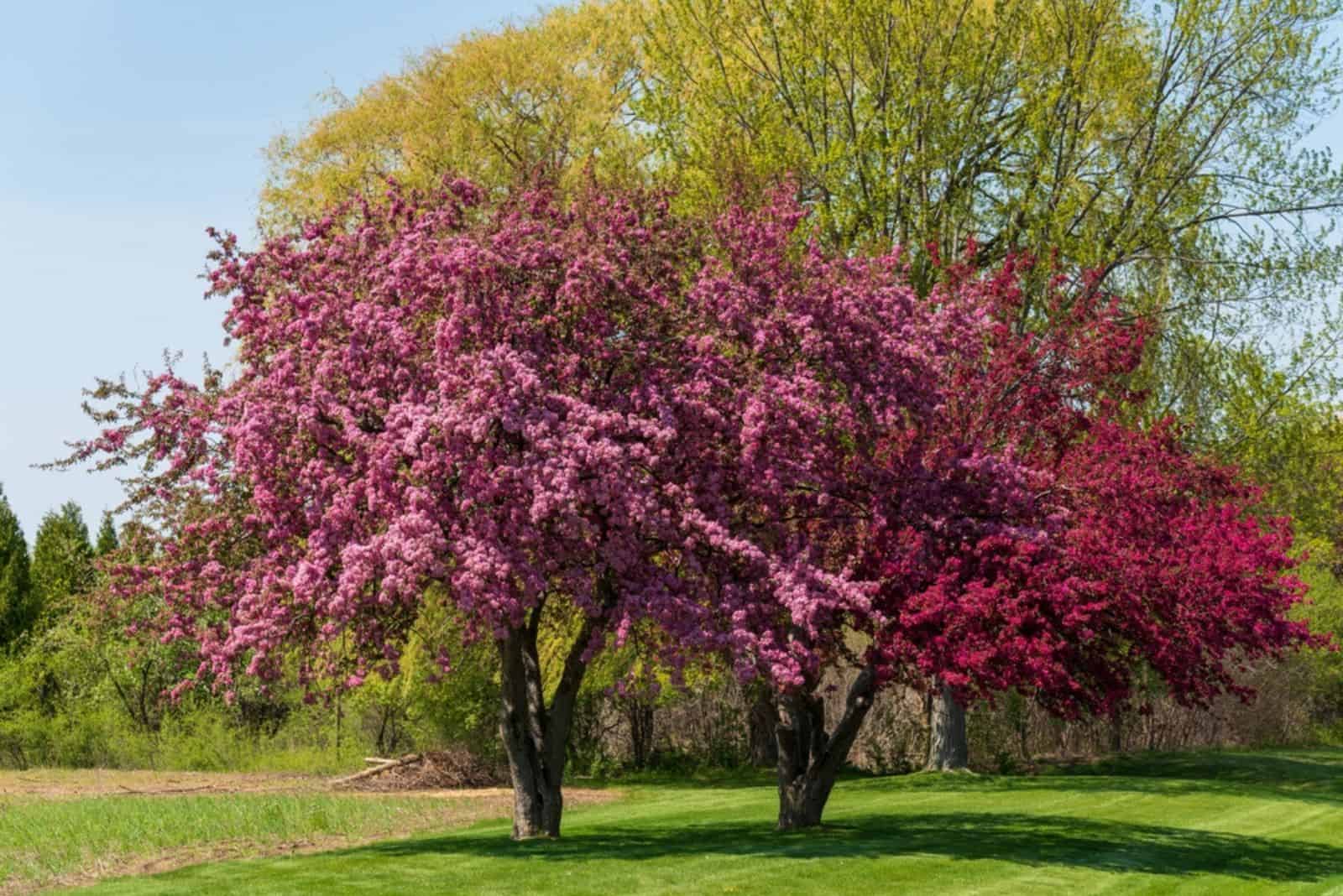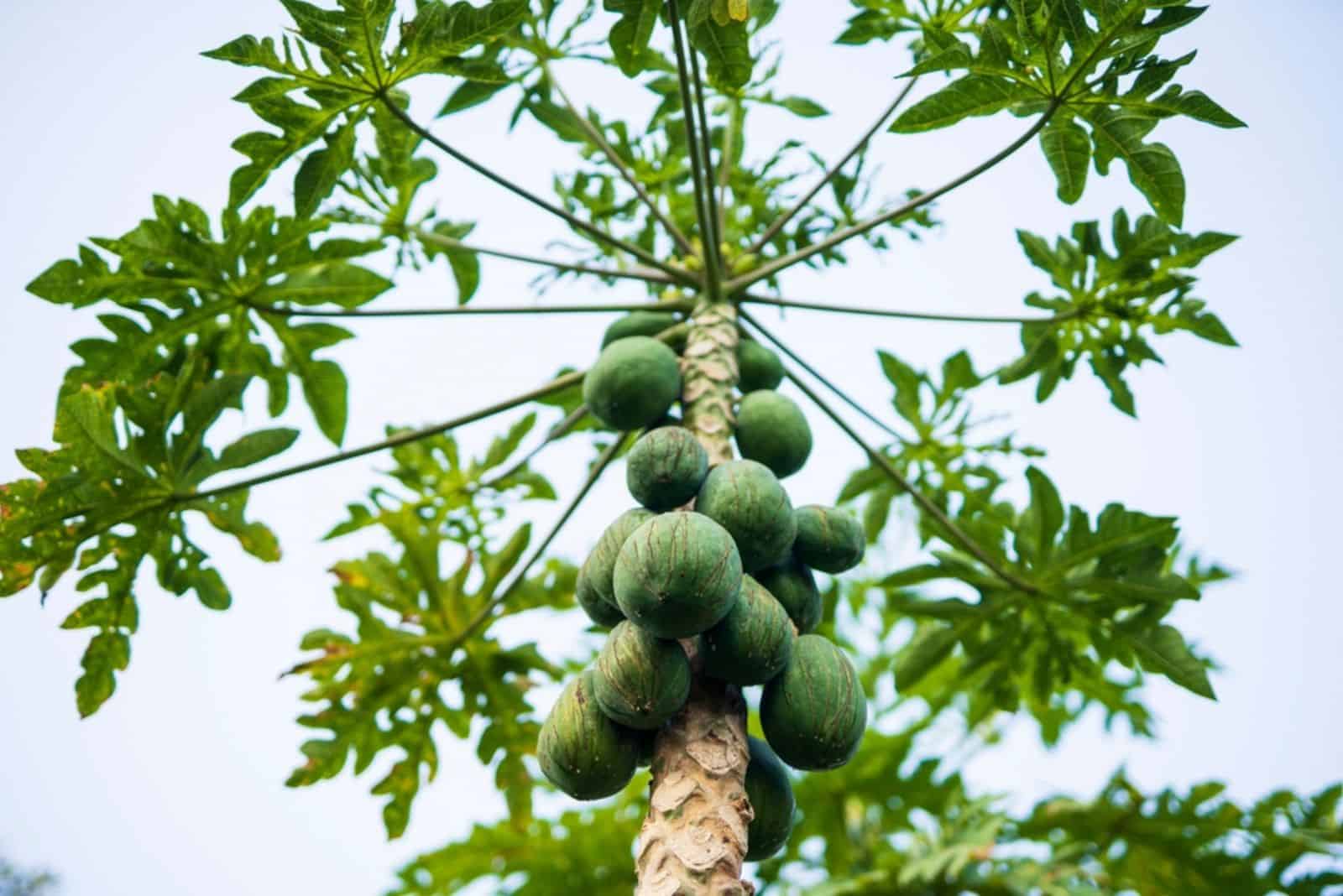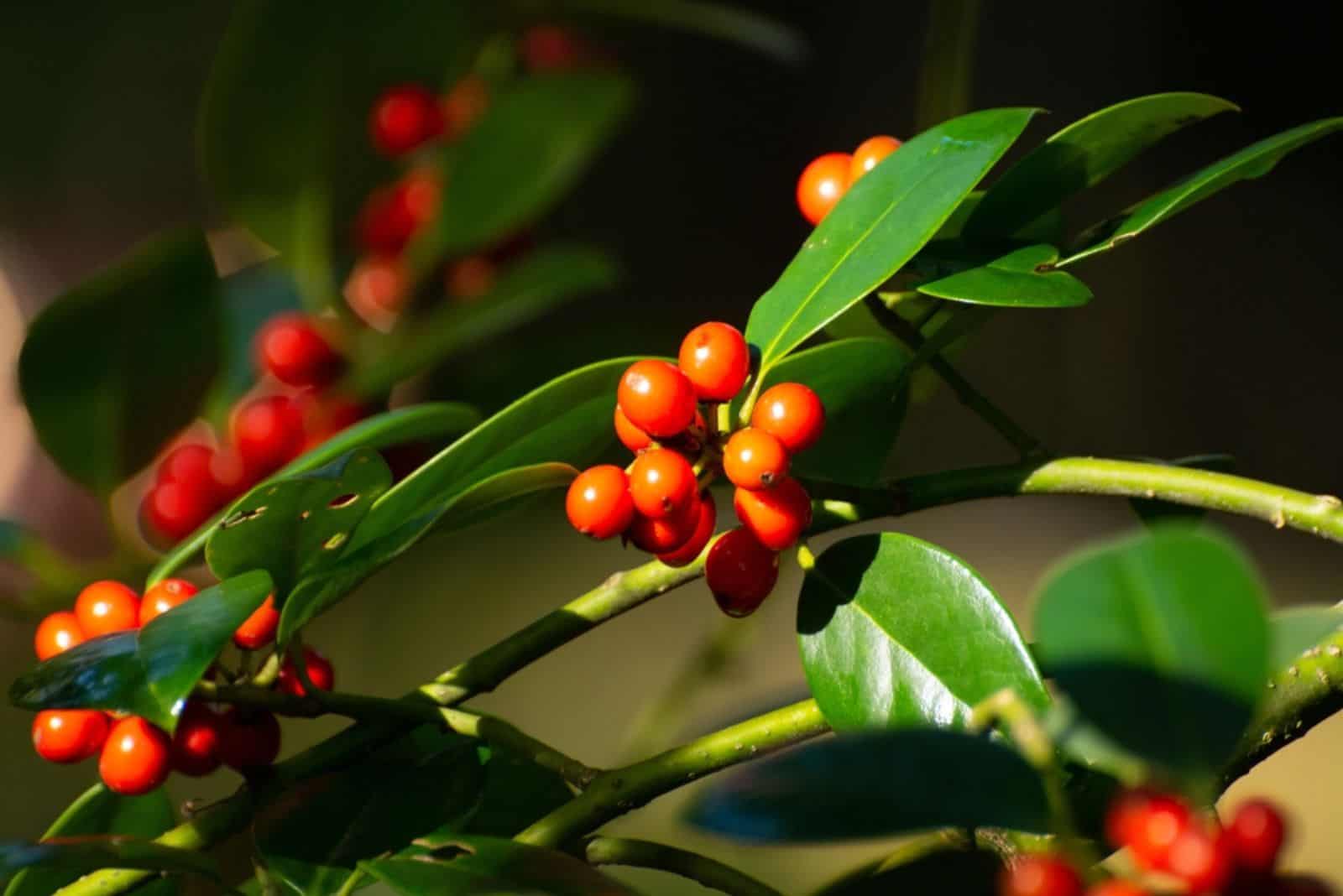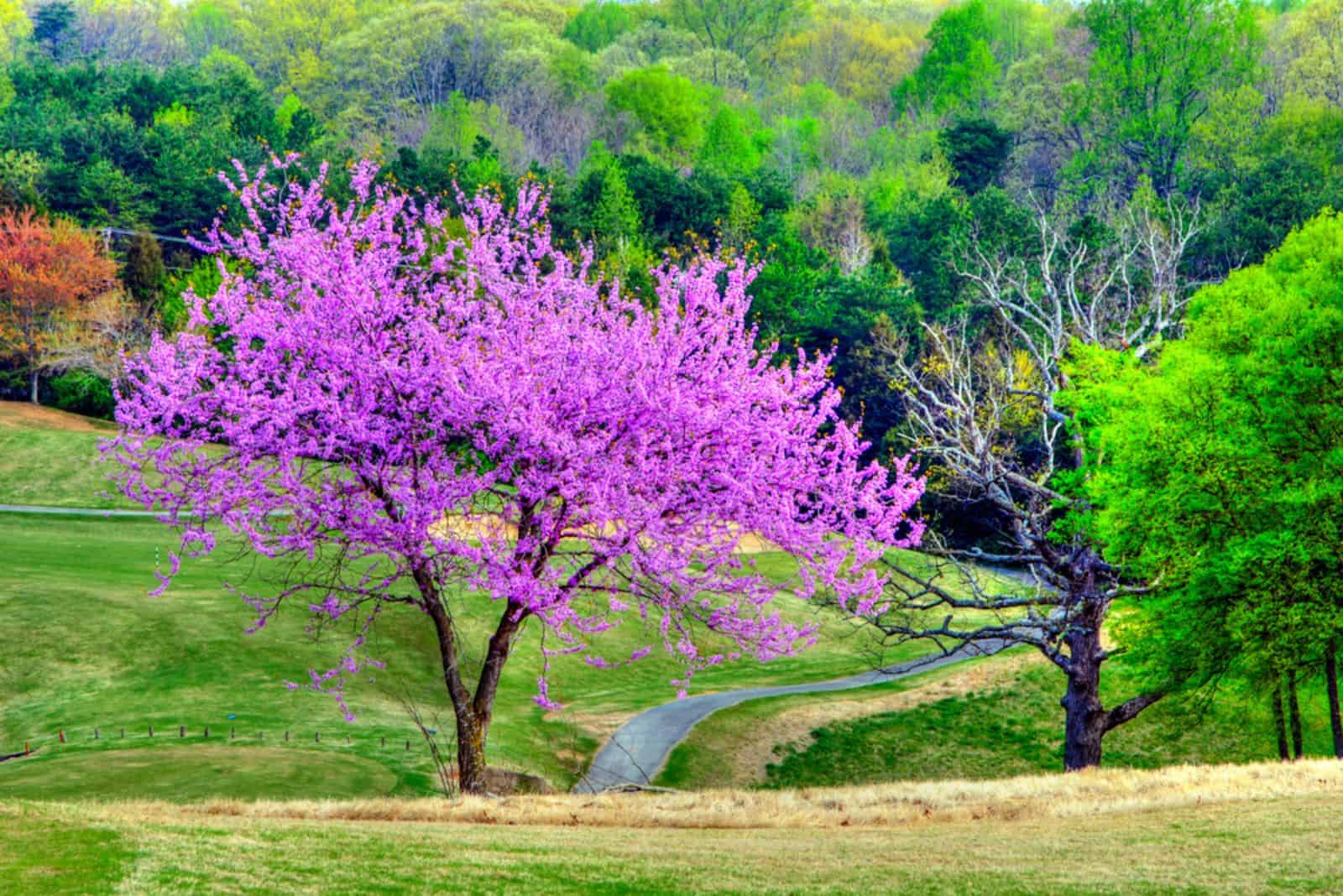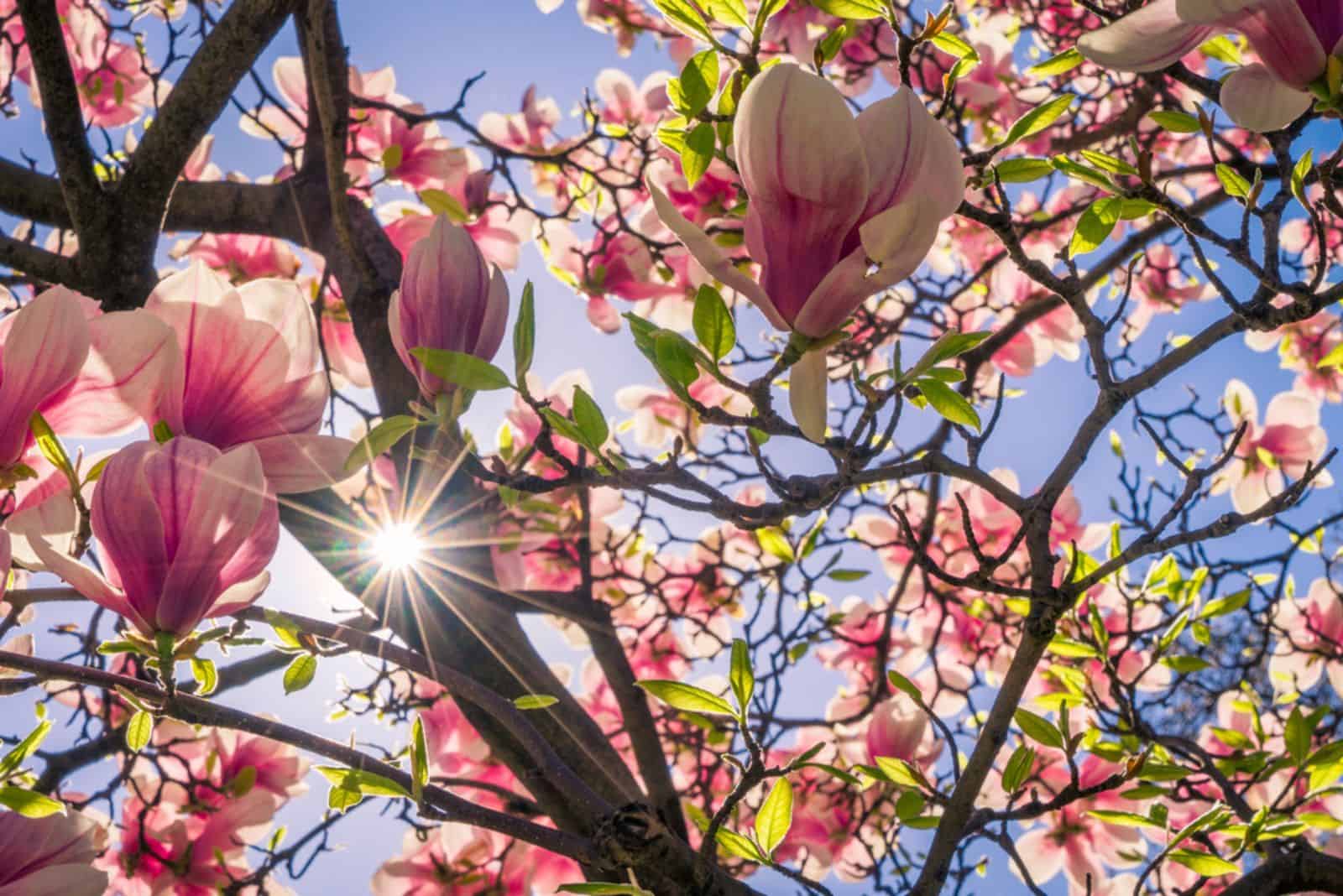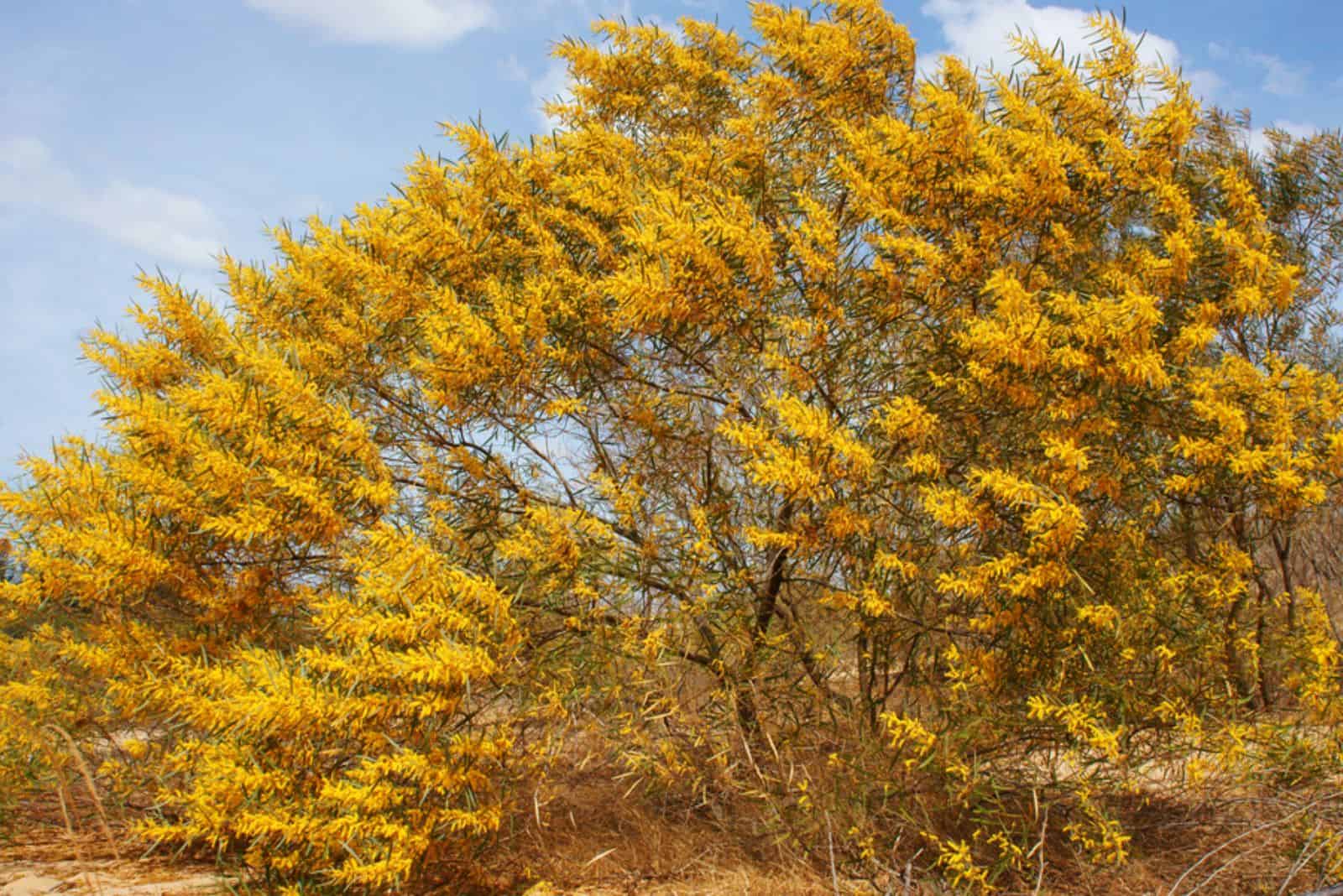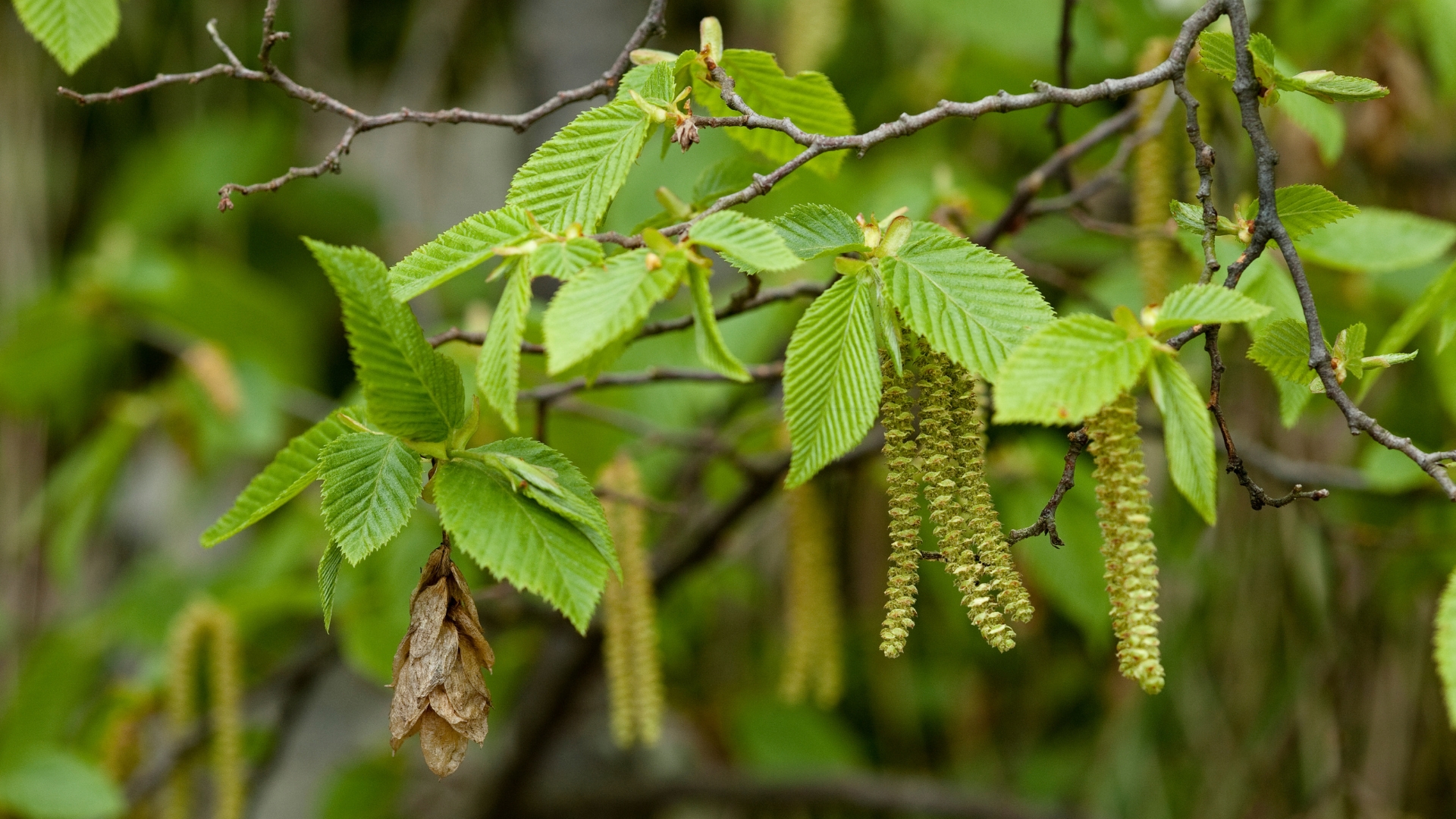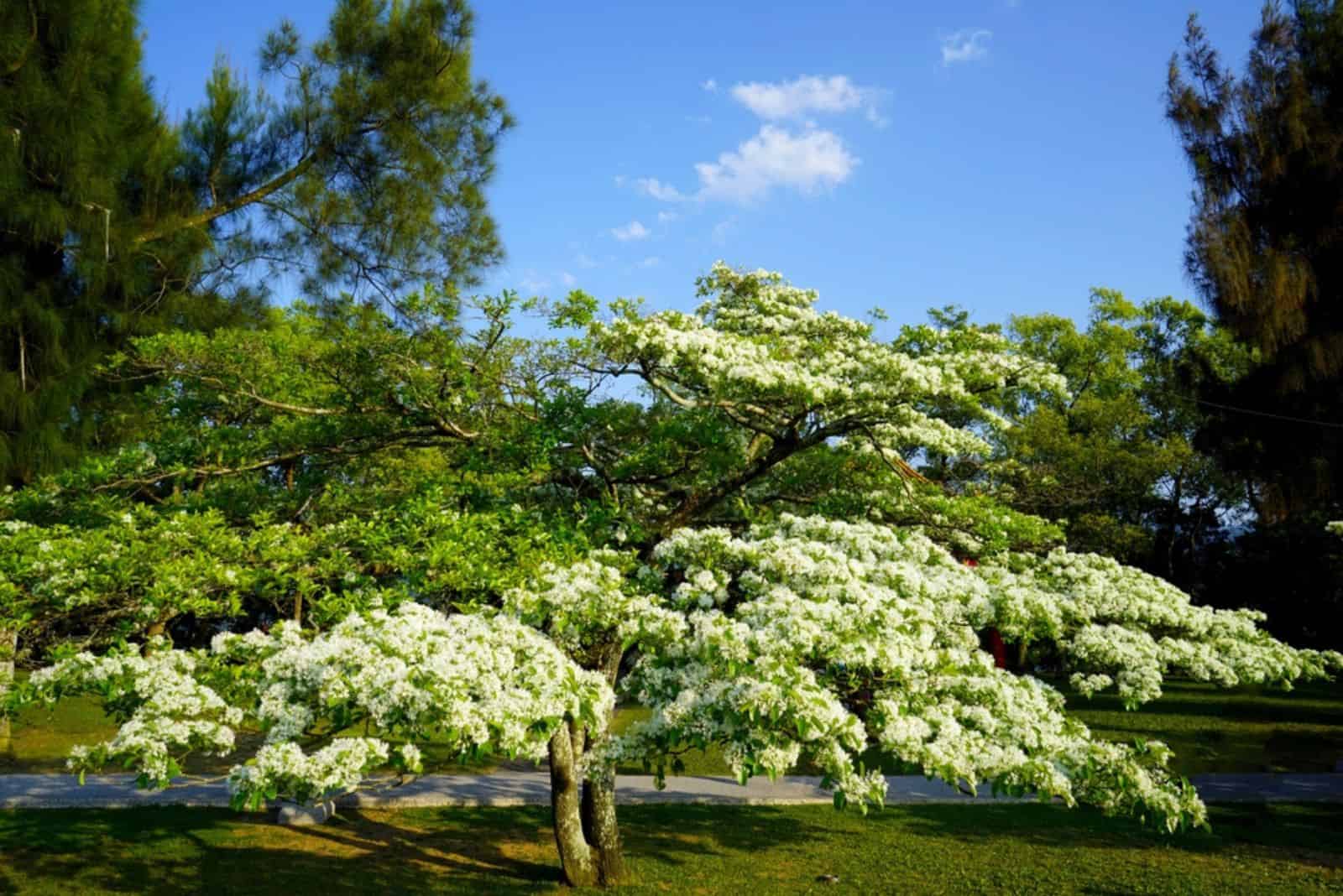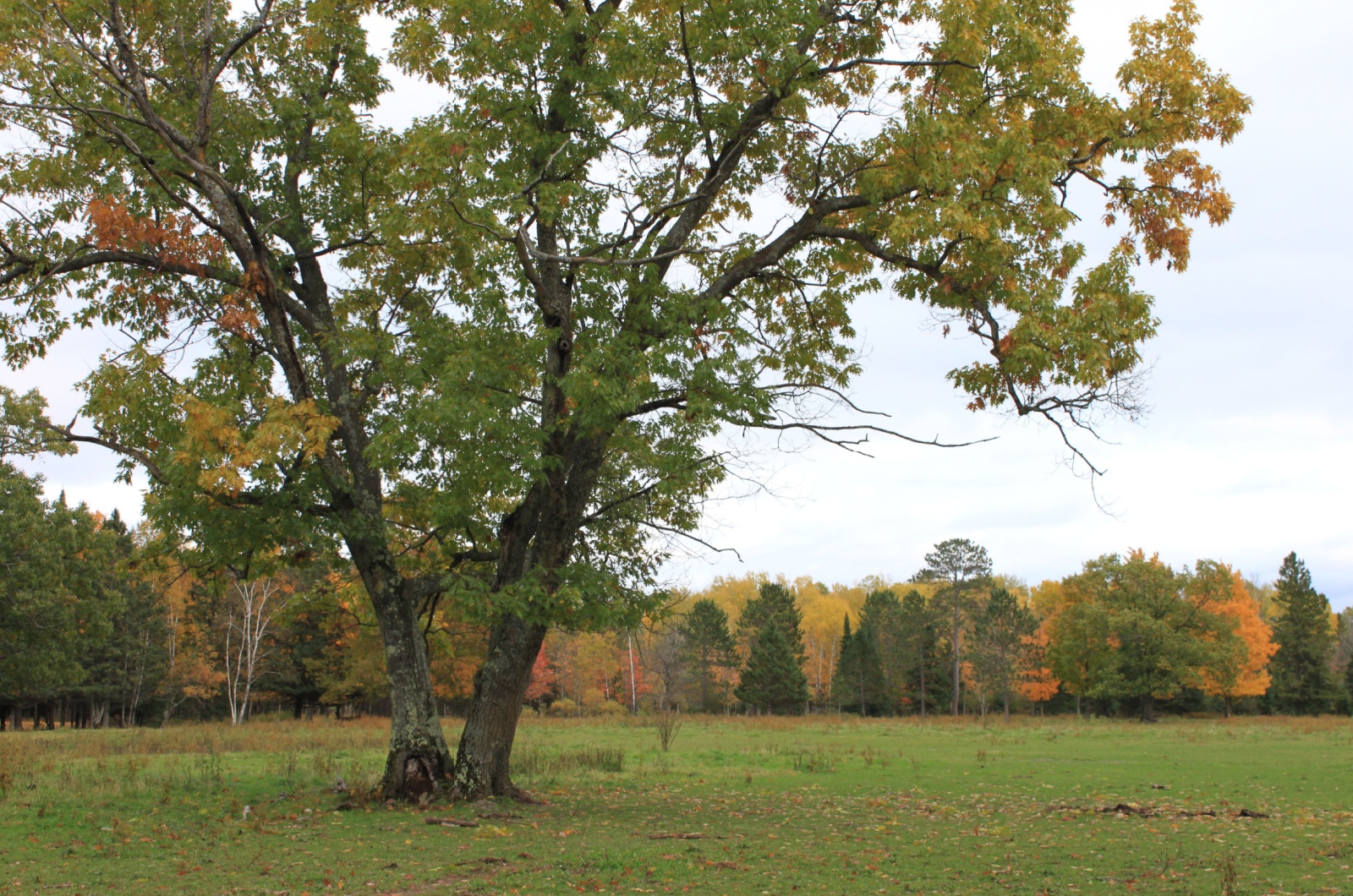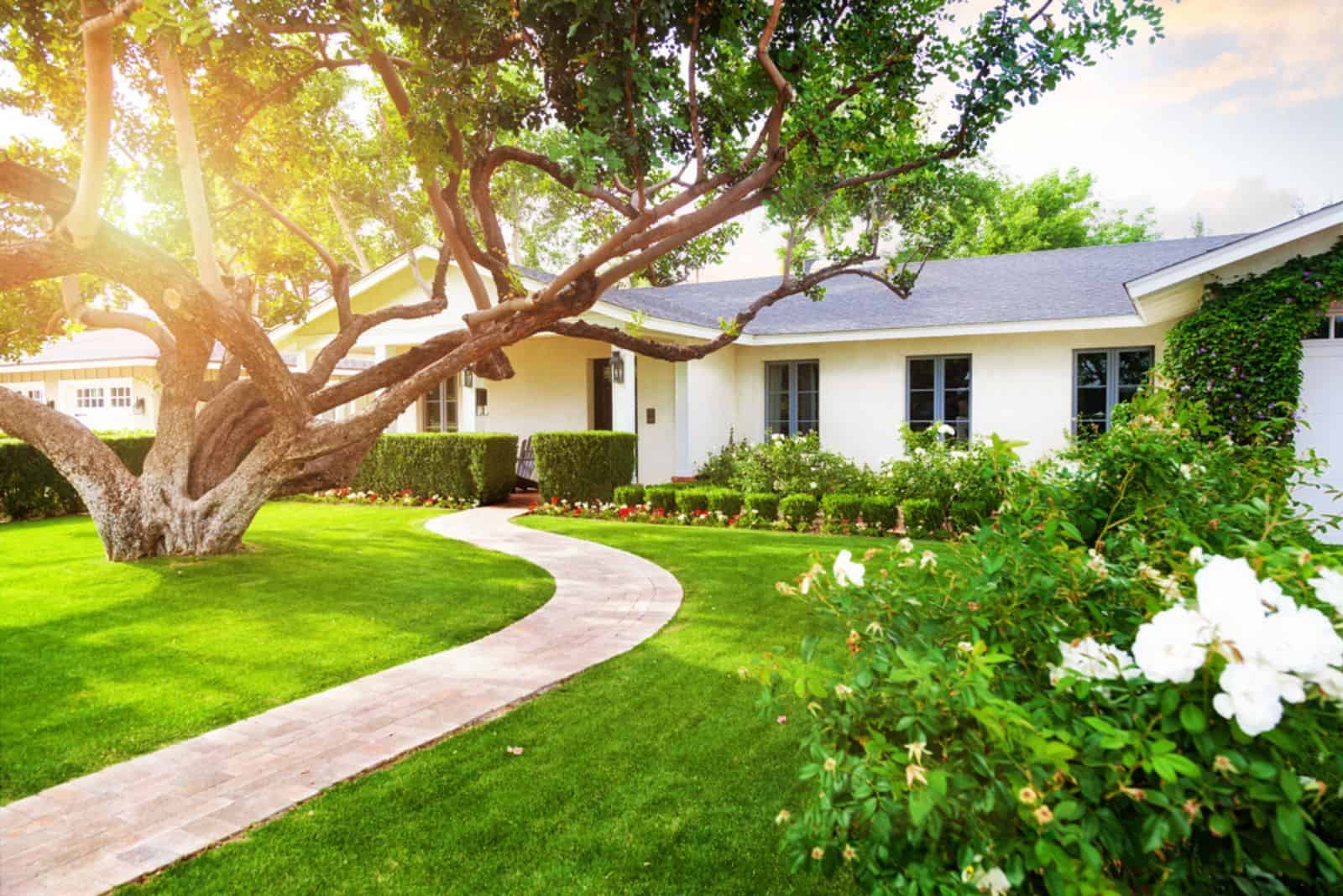When you want to plant trees in your yard, you will have to carefully choose a tree that is suitable. In some cases, certain tree species develop a huge root system that can mess up the sewer lines and foundations of the buildings nearby.
These trees also take up a lot of space and absorb many nutrients from the soil, so you can basically say goodbye to fruits and veggies in the garden.
Luckily, there are some beautiful trees that are perfectly safe to grow in the yard. If you are interested in finding out about the best trees to plant near house, read on!
Best Trees To Plant Near House
When choosing a tree to plant near your house, you will have to take into consideration its mature height, growth habits, and maintenance. Low-maintenance trees are definitely the easiest to grow, but you still have to choose smaller ones with non-invasive roots to fit into your yard.
Luckily, these are also ornamental trees that can make your yard look absolutely fantastic.
Now, let’s dive in!
1. Crabapple Tree
Crabapples are one of the loveliest trees that produce purple flowers. Their magnificent purple and pink flowers can make your garden look like a fairy tale, especially in the spring when they start blooming.
Crabapples typically bloom in the middle to late spring, though in some areas, blossoms may appear earlier or later in the season. They typically last for approximately 10 days, although in hot or windy conditions they may disappear in five to seven days.
After the blooms fade, small fruit appears that squirrels and birds devour.
These are not fast-growing trees — their growth rate is moderate, so you don’t have to worry about them conquering your yard. Their mature size is 20 feet tall, though there are some dwarf varieties that grow up to 10 feet.
When it comes to tree care, they prefer being exposed to direct sunlight for at least 8 hours during the day, though they can grow perfectly fine when exposed to 6 hours of sunlight.
Crabapples that have just been planted need weekly irrigation. The soil around the roots should always be damp but not soggy.
They don’t require any watering after they mature and become established trees. Only water them if the weather is hot and there is no likelihood of rain. Winter temperatures of 45 degrees Fahrenheit or less are ideal for crabapples because they prefer the cold. When the humidity is above 60%, summertime temperatures shouldn’t go above 70 degrees Fahrenheit.
2. Maple Trees
Maples are small trees that can also be grown in a container. However, when they are grown in containers they require special plant care. Once they are placed in the ground, these trees will basically take care of themselves.
These are also one of the slowest-growing trees, so cultivating them in pots makes sense because they won’t form aggressive roots for a short period of time.
The most famous cultivar is definitely the Japanese Maple tree. This variety produces flaming hot foliage that is simply breathtaking! However, the foliage is not red for the entire season — they are green during summer and turn red in the fall.
Homeowners usually go with this Maple as its presence brings peace and harmony, and they are the epitome of Japanese aesthetics. They may thrive in a variety of soil types but prefer a slightly acidic, well-draining environment. Warm temperatures and moderate sunlight are ideal for Maple trees.
However, not all Maple trees are excellent choices for the garden. For instance, the Silver Maple produces gorgeous, shimmery leaves, but the tree roots also grow above the ground, which can mess up the lawn and nearby plants.
3. Pawpaw Tree
Because it produces sweet-tasting tropical fruit from late summer through October, the pawpaw is one of our favorite evergreen shade trees.
It is a fruit tree with a moderate growth rate, and only the southern species are evergreen. However, you will definitely appreciate the gorgeous fall hues and tasty fruit of northern pawpaws.
This tree’s size is ideal for any landscape, and its lobed, green leaves make it simpler to relax in the shade. When planting trees, pawpaw should be spaced between 8 and 15 feet apart because their typical height is between 15 and 30 feet.
They prefer full sun but can also tolerate some shade. When it comes to water requirements, they need an inch of water per week (either rainfall or supplemental watering). The soil should be fertile and well-draining.
4. Dogwood Tree
Dogwood trees, also known as Cornus trees, are the type of trees that produce precious little flowers.
The flowering Dogwood tree is native to North America and can grow perfectly fine in USDA hardiness zones 2 to 9. These are deciduous trees that grow about 1 foot per year, and they can grow up to 25 feet tall!
There are many other types of Dogwood trees, but the Cherokee Princess Dogwood tree, which is relatively simple to grow, is arguably the most well-known. It requires little watering and can grow in different lighting conditions.
5. American Holly
American Holly is an evergreen tree that can also be grown as a shrub. It is a tall tree that can reach up to 60 feet tall, but if it is regularly pruned and maintained, it can easily be grown as a lovely shrub in the empty corners of your yard!
American Holly produces glossy green leaves and red berries that should not be eaten because they contain toxic chemicals that could cause vomiting, nausea, and diarrhea.
Due to their vigorous growth, these smaller trees can also be grown as a hedge, though in this case you would have to constantly prune it. It thrives in USDA hardiness zones 5 to 9 and can adapt to different growing conditions.
6. Redbud Tree
If you want to grow a pink garden, then the Eastern Redbud is definitely the right tree for you!
Magenta and pink blooms are produced by this little tree, and they begin to appear in the early spring.
The Redbud tree is a native of North America and it requires little maintenance. Once established, its root systems require little watering (once a week at the most). They can live for extended periods without water and still bloom vibrantly.
What’s also interesting is that these flowers can be eaten raw or cooked!
7. Magnolia
The low-maintenance shade trees known as Magnolias yield stunning white and pink flowers. There are various types that produce tulip-shaped or star-shaped flowers in a variety of colors. They can grow as evergreen or deciduous trees. These trees require regular irrigation and like acidic, well-draining soil.
One of the prettiest varieties is definitely the Magnolia stellata, also known as the Star Magnolia. This species is a slow-growing tree that remains relatively small. It produces pink and white flowers that start to bloom in the early spring.
8. American Hornbeam
This is a deciduous tree that is native to the eastern USA. It belongs to the Betulaceae family and produces beautiful seeds that look like tiny beads. This tree also produces a smooth and gray trunk with large branches.
It is a small and slow-growing tree that can adapt to various conditions, although it thrives in USDA hardiness zones 3 to 9. The American hornbeam requires at least 4 hours of sunlight during the day and it is not drought-tolerant, so you will have to water it thoroughly and regularly.
9. Acacia Aneura Tree
With its green, needle-like foliage, the Acacia Aneura offers year-round appeal. These trees bloom with vivid yellow blooms in the summer, which add a splash of color to your yard.
These trees are indigenous to Australia and can withstand extreme heat. They are also drought-tolerant and require less irrigation, unlike the American hornbeam, which requires regular watering.
10. Eastern Hophornbeam
Eastern hophornbeam is an excellent small tree for planting near a house, thanks to its slow growth and manageable size. This tree produces unique, hop-like seed clusters in late summer, adding an interesting visual element to your landscape. In fall, its leaves turn a golden-yellow shade, creating a beautiful seasonal display.
One of the best things about this tree is its durability. It thrives in various soil types, handles drought well, and can withstand urban conditions. If you’re looking for a tree that requires little maintenance but still provides year-round appeal, this one is a fantastic choice.
Eastern hophornbeam grows best in full sun to partial shade. While it doesn’t require frequent watering once established, occasional deep watering during dry spells will keep it thriving.
11. Fringe Tree
The fringe tree is a lesser-known but absolutely stunning addition to a garden. Its delicate, white, fringe-like flowers cover the tree in late spring, creating a breathtaking display. The blooms also give off a light, sweet fragrance, attracting butterflies and other pollinators.
This tree stays on the smaller side, reaching about 20 feet tall at maturity. Its slow growth and non-invasive roots make it a great option for planting near a house. In fall, the green leaves turn a lovely golden yellow, adding seasonal interest.
Fringe trees thrive in full sun to partial shade and adapt well to different soil types. They require minimal maintenance, only needing occasional deep watering during dry periods.
Trees To Avoid Planting Near Your House
There are certain trees that simply cannot be grown in a yard. Not only will they take up a lot of space, but they can also cause foundational damage and mess up the sewer lines.
Just take a look at the oak tree, which can grow up to 70 feet tall — it definitely requires much more space than the smaller Magnolia tree.
Since we have covered some of the best trees to plant near your house, we’ll now look at some of the trees you should avoid.
• American Elm tree — this tree produces shallow roots that would otherwise disrupt the lawn, sidewalks, pathways, or patios.
• White ash — this is a fast-growing tree that produces invasive lateral roots. This tree is also susceptible to emerald ash borer, which is a pest that can damage your tree and plants nearby.
• Weeping willow — these are the large shade trees that have invasive roots that can mess up pipes.
• Poplar — otherwise known as the cottonwood tree, it is a very pretty tree that produces unique green foliage which turns bright yellow in the fall. Unfortunately, this fast-growing tree species can cause severe damage to adjacent foundations, infrastructure, and buildings.
• Silver maple — the roots of this magnificent tree tend to grow above the ground and disrupt lawns, plants, and nearby structures.
Frequently Asked Questions
1. What are some trees that can grow next to a house?
Some trees that are perfectly safe to grow next to a house include Magnolias, Japanese Maple tree, Crabapple tree, Redbud tree, Dogwood tree, Acacia Aneura tree, American Holly, and Pawpaw tree.
These trees don’t have aggressive roots, they stay relatively small, and they won’t cause any damage to nearby foundations, plants, sewer lines, pathways, patios, or sidewalks.
2. What are some trees that should not be planted next to a house?
You should not plant trees that grow wide and tall. In most cases, these trees have invasive roots that can mess up foundations, infrastructure, houses, or buildings nearby. Some types also attract bad insects and pests that can damage your plants in the garden.
These trees include Oak trees, Elm trees, White ash, Poplars, Silver Maple, and Weeping willow.
To Sum Up
I know that it is in everyone’s best interest to have the prettiest garden or yard in the neighborhood. However, you should strategically plan where to plant some types of plants, trees, or even herbs!
Some plants simply cannot grow next to one another — they can even attract bad insects that can ruin the rest of your garden or even your lawn grass. More serious issues arise when planting the wrong tree in your garden.
Some trees have aggressive roots that can completely destroy house foundations, buildings, pathways, patios, or sidewalks nearby. They can also mess up sewer lines, and some might attract certain tree pests that can cause damage to other plants in the garden.
Therefore, you should be smart when choosing the best trees to plant near house. Some of the abovementioned species are truly breathtaking and easy to grow — once established, most of these trees basically take care of themselves!
Nonetheless, you should always take a look at the plant care guide.
I hope this article was helpful.
Until next time!
Like this post? Share or pin it for later!

